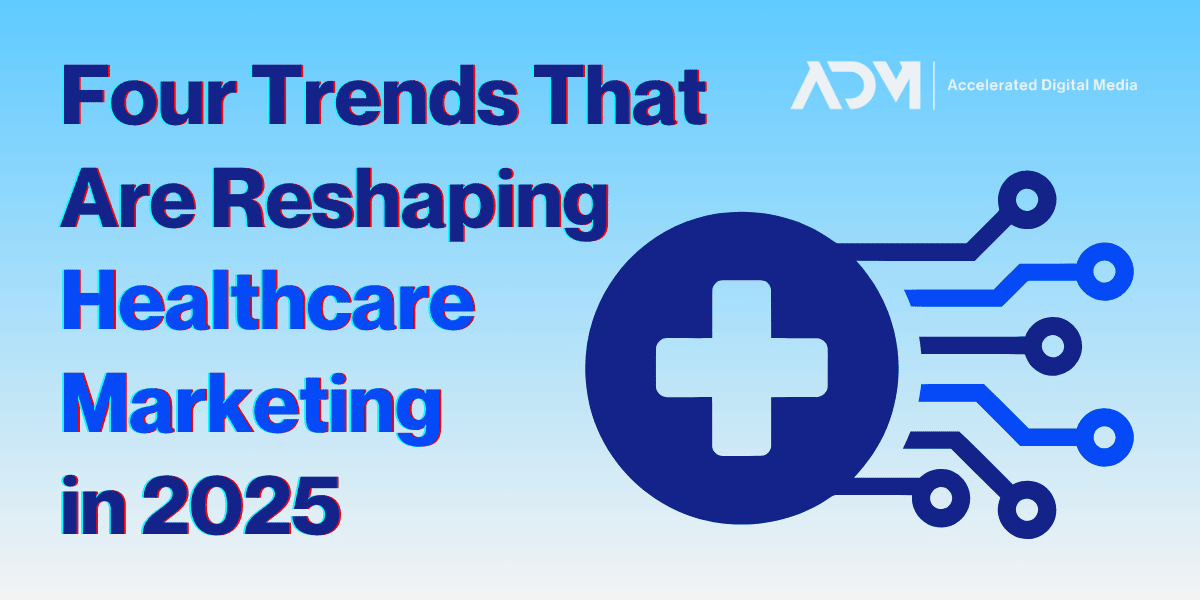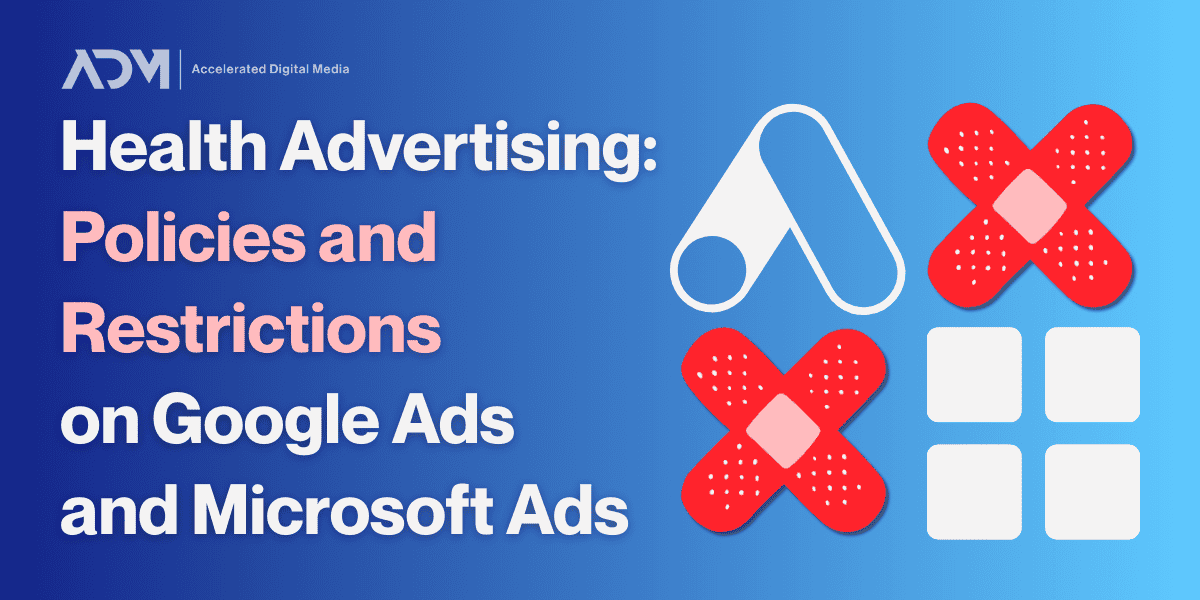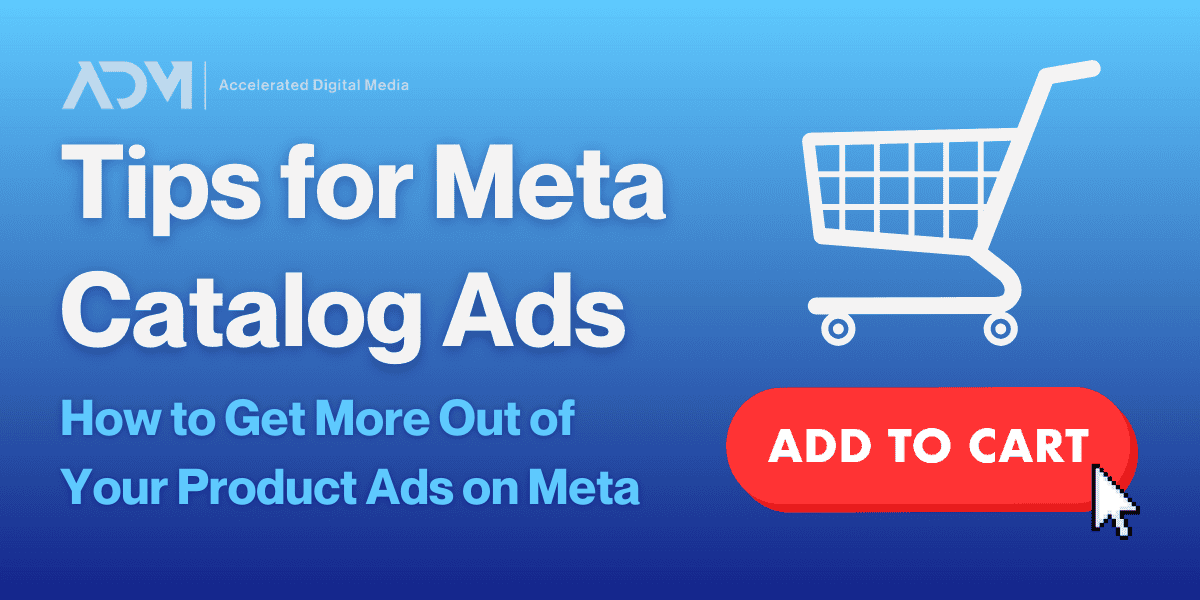Healthcare is one of the most scrutinized corners of digital marketing. That’s because the intersection of patient privacy and marketing technology is unprecedented and hard to navigate: The core law governing it, HIPAA, was written long before lawmakers could conceive the scope and advertising capabilities that search engines and social media would someday offer.
The result has been a continual evolution in approach from all sides of the equation: marketers, marketing platforms, and government agencies. After years of lax enforcement, media investigations and Federal Trade Commission (FTC) enforcement actions put the entire industry on notice a few years ago.
Since then, change has only accelerated—and 2025 has already seen its fair share of important developments. In this blog, we’ll discuss four major trends that we’re training our sights on this year and offer our thoughts and tips about how health and wellness brands should interpret and react to them.
Contents:
- Marketing Platforms Are Taking Health Data More Seriously
- Other Platform Updates May Create Unexpected Risks
- A Changing Search Landscape Could Alter Patient Journeys
- AI is Becoming More Useful in Healthcare Marketing
- Keeping Our Eyes on the Future of Healthcare Marketing
Marketing Platforms Are Taking Health Data More Seriously
Most advertising platforms for both SEM and paid social have existing policies on how health advertisers can use their platforms, but those mostly take the form of encouraging patient privacy protection rather than technical prevention. That has begun to change.
In early 2025, Meta introduced new policies that prevent health and wellness marketers from using certain event data to track conversions. The social giant does so by categorizing advertisers in sensitive fields like health and wellness and then applying either full or partial restrictions on their ability to optimize campaigns around certain bottom-of-funnel conversion events.
That’s happening because specific user information—like names and locations from a Meta profile—could be combined with a piece of health information—like the decision to book an appointment with a therapist—to generate protected health information (PHI). Sharing PHI with Meta ads would constitute a privacy breach.
Given how easy it has always been for less-knowledgeable marketers to unknowingly create campaigns that violate health privacy laws, it makes sense that Meta is finally taking action. While government enforcement actions have primarily been targeted at the advertisers who run afoul of laws, class action lawsuits have begun to target the platforms as well—including Meta.
How should health marketers respond?
For one thing, brands may need to rethink their advertising approach on Meta Ads if their existing strategies are dependent on conversion goals they can no longer use. A good starting point is just adopting good naming conventions to ensure your actions don’t clearly imply any health decision or behavior. For some brands, it might be worth partnering with a customer data platform that focuses on health compliance.
On a more macro level, however, this will be a trend to watch closely going forward to see if other platforms follow suit. LinkedIn Ads, also sued for allowing certain health marketing behaviors, has recently limited certain capabilities. It remains to be seen if the biggest fish—Google—will decide if it’s time to add more safeguards for sensitive industries…and there’s always the possibility that Meta Ads makes further changes. Healthcare marketers will need to keep their eyes trained on the news and make quick adjustments, which is par for the course in this rapidly-changing space.
Other Platform Updates May Create Unexpected Risks
Sometimes, digital marketing updates can create challenges for healthcare brands even when they aren’t intended to. This spring, Google announced changes to Google Tag Manager (GTM) functionality meant to improve attribution and event tracking accuracy. But that change entails loading Google tags immediately when a user visits the site, which could be a problem for health brands that haven’t been strident in keeping their site in order.
While this shouldn’t create issues for brands that work with dedicated healthcare marketing agencies and have kept a tight purview over all tracking implementations, it’s a reminder that plenty of healthcare brands are not in that bucket. Those that, for example, simply paused their Google Ads campaigns out of concerns about HIPAA compliance may still have Google Ads tags hanging out in their GTM containers—which would become a liability after this new GTM update.
As marketing platforms continue to innovate their offerings, it’s vital that healthcare brands take a thorough look at what new technologies can do and what patient data vulnerabilities they can potentially create. While quick adoption is a great way to keep a competitive edge, brands in this space need to investigate carefully before taking the leap.
What health marketers should do:
Healthcare companies need to hold their websites to an extremely high standard to be certain that patient data is being handled in ethical, legal ways. That’s an ongoing battle, but if you’re unsure whether your site is currently exposing you to liability, the best steps you can take are to:
- Audit your GTM container to identify and remove any unnecessary Google Ads, Analytics, or Floodlight tags
- Check for any possibility that your site is generating and transmitting PHI—including through URLs
- Assess all new marketing tools for compliance before implementation
- Consider enlisting compliance-focused CDPs to safeguard data while leveraging Google Ads and Meta Ads effectively
- Enlist a specialized healthcare marketing agency to stay ahead of evolving privacy laws and platform policies
A Changing Search Landscape Could Alter Patient Journeys
A healthcare decision takes a monumental amount of research compared to something like, say, a shoe purchase. It’s an involved process that often progresses from researching symptoms to getting a diagnosis to exploring care options and, finally, to choosing a healthcare provider or service. Those patient journeys present a number of ways for healthcare providers to reach potential patients with information about conditions and treatments—and most of them rely heavily on search.
But the nature of search is changing. Google’s SERP has been redesigned dramatically in recent years, with more video, image, and Shopping integrations that push paid and organic text results further down the page. The most novel new integrations however, are AI Overviews (AIOs)—which autopopulate in response to some searches, particularly questions.
Not only do AIOs continue the crowding-out of organic and paid search results, they can prevent users from even clicking them if they feel the AI has sufficiently answered their question and informed them. Some early research indicates they may be driving down click-through rates. This could prove to be a threat for site traffic for countless companies around the world. That’s before considering the potential healthcare implications of AI answers that are often inaccurate, incomplete, or untrustworthy.
But Google’s chatbot isn’t the only thing disrupting search—actually, other chatbots are disrupting Google, too. Users increasingly report turning to services like ChatGPT to answer their pressing or specific questions. And even beyond that younger audiences are increasingly turning to TikTok and YouTube searches for their primary research, raising more questions about potential decreases in traditional web traffic and increases in misinformation.
What this means for health marketing:
For health marketers who rely on paid and organic search to reach users at each stage of the patient journey, this all could be very complicating—particularly in the early informational stages.
- Paid and organic search may someday lose some of their efficacy, forcing healthcare brands to potentially become less reliant on their keyword campaigns and landing pages to acquire new patients. ADM has yet to observe a dramatic impact here.
- Healthcare brands will need to remain steadfast about providing accurate, coherent information about conditions and treatments in their advertising.
- Healthcare marketers will need to pay close attention to functions like AIOs as they evolve. Because Google is keen on monetizing its services, they could someday include an advertising opportunity.
AI is Becoming More Useful in Healthcare Marketing
AI is a constant hot topic because the world seems split about whether it’s giving us something new or taking opportunities away. In the case of marketing, it can be both. We already discussed a potential takeaway above, but AI-powered campaigns can add a lot to a health marketing program if harnessed correctly.
The effectiveness of campaign types like Google’s Performance Max is often viewed through an eCommerce lens—particularly for their Google Shopping functionality. At ADM, however, we’ve found these powerful campaigns can also be beneficial to healthcare advertisers, particularly due to the competitiveness of this space.
In healthcare, some condition-related keywords are so competitive that customer acquisition cost (CAC) can exceed $1,000. In 2024, we tested whether Performance Max could augment a typical Non-Brand Search strategy for one telehealth client. Instead of running standalone campaigns, we launched a general Performance Max campaign, then expanded with asset groups targeting high-cost concepts. The result was a surge in patient signups at a CAC comparable to other non-brand campaigns—far more efficient than direct keyword bidding.
Advantages and challenges
While AI-powered marketing tools are beginning to show efficacy for healthcare clients, there are some tools that won’t work due to lack of efficacy or compliance questions. Meta, for instance, does not allow medical brands to deploy Dynamic Product Ads, which are increasingly deployed through their AI-powered Advantage+ campaign type.
- Any AI-powered campaign tool should be investigated for compliance implications before use in healthcare marketing applications
- AI tools will likely need to be used in more constrained ways than they would be in other industries, because healthcare marketers cannot provide AI with the same depth of data that generalist brands can
- Future guidance from platforms may influence whether brands can expand their use of these tools
Keeping Our Eyes on the Future of Healthcare Marketing
There is no shortage of themes to follow as we progress through 2025 and beyond. With a new Presidential administration setting the direction for the Federal Trade Commission, for example, it’s unknown whether scrutiny over the healthcare marketing space will intensify or diminish. A single announcement or new enforcement action can change industrywide best practices in the blink of an eye.
As a dedicated healthcare marketing agency, our obligation is to continually keep our focus on every factor that can influence this industry. Good digital marketing in a sensitive industry relies on nimbleness, attention to detail, and adaptation. ADM has helped guide some of the most innovative digital and in-person healthcare companies to their next stage of growth, and we’re always happy to assist others in furthering their mission while protecting patient data.
If you’re uncertain about what your brand can or can’t do, or you’re simply looking for a second set of eyes to audit your current HIPAA compliance, do not hesitate to reach out to the ADM team to ask.




